Imagine your home being burned to the ground. You salvage as many items as possible. No time to think, you grab whatever’s in your reach because the fire is ravaging your home with no signs of stopping. Imagine it happening ten-fold, because the fire reached not only you, but your neighbors, your community, your entire region. That’s exactly what took place on September 9, 2015, when Calaveras County experienced a devastating fire known as the Butte Fire. I had the chance to visit the region, east of Stockton, and speak with a couple of residents in the city of Angels Camp. These residents in particular, Monika Rose and Suzanne Murphy, are also leading an effort to heal the community through their company Manzanita Writers Press, a non-profit publishing organization, known for creating anthologies about the Sierra and the Mother Lode, and Out of the Fire is their latest project.
Video featured on their Kickstarter page
Can you tell me from both of your experiences, what the Butte Fire was all about in Calaveras County?
Monika: It was a very destructive fire. They said it was the 7th most destructive in California to date. Many people left homeless, thousands of people evacuated, [and] many have not returned to their homes. For many, there are no homes. The property is laid waste, there’s a rebirth of greenery and flowers, and things like that, but most of the pines will not come back; the ponderosas, the oaks—some of the oaks, maybe, retained life. But basically it was a very hot, hot fire, about 4,000 degrees in some places, enough to melt ceramic, and melt metal, cars—you could take say aluminum, and it made a liquid that would run down into dirt. It was a very destructive fire that displaced people mainly on the western side of our county. Rail Road Flat and West Point were not as affected but they all had to evacuate. Mokelumne Hill, the Glencoe area, and Mountain Ranch, where I live, were heavily impacted. The center of town was saved by ranchers and people who lived there, but San Andreas and other surrounding areas were also evacuated and burned, and so about 70,000-71,000 charred acres in total. It was a large swath.
Many people don’t see that damage driving through our county because the main highways do not traverse the burned areas, so you’re off the beaten path. Most travelers do not go to the more remote areas where many people had their homes destroyed. In these sanctuary areas that we just love, the general public won’t see the destruction, unless they choose to go there. If you go to California Caverns, for instance, in Mountain Ranch, you’ll see the destruction throughout most of the drive there. The caverns were spared. For the people whose homes were not saved, they’re experiencing the bureaucracy of trying to work through the insurance issues, PG&E lawsuits and also the emotional content of rearranging their lives, deciding whether they should come back or not.
The community is not as it was. You would think people would want to come back and rebuild, and many of them would have done that except for the time frame. The destruction was so complete that getting permits took a long time, and the cleanup of the site was unprecedented. Basically [the soil] had to be so clean that a child could play in the dirt and not have a reaction, and that was unprecedented what the crews did. It’s a good thing, you know, but it took a lot of time. And so, many people in the meantime were grappling with their insurance companies, and many of them had structures that were substandard, grandfathered-in maybe, as they weren’t permitted—thus many of them weren’t insured so it was quite a loss for them. Living like that was difficult, and today there are still many living in substandard conditions. It hit them pretty hard.
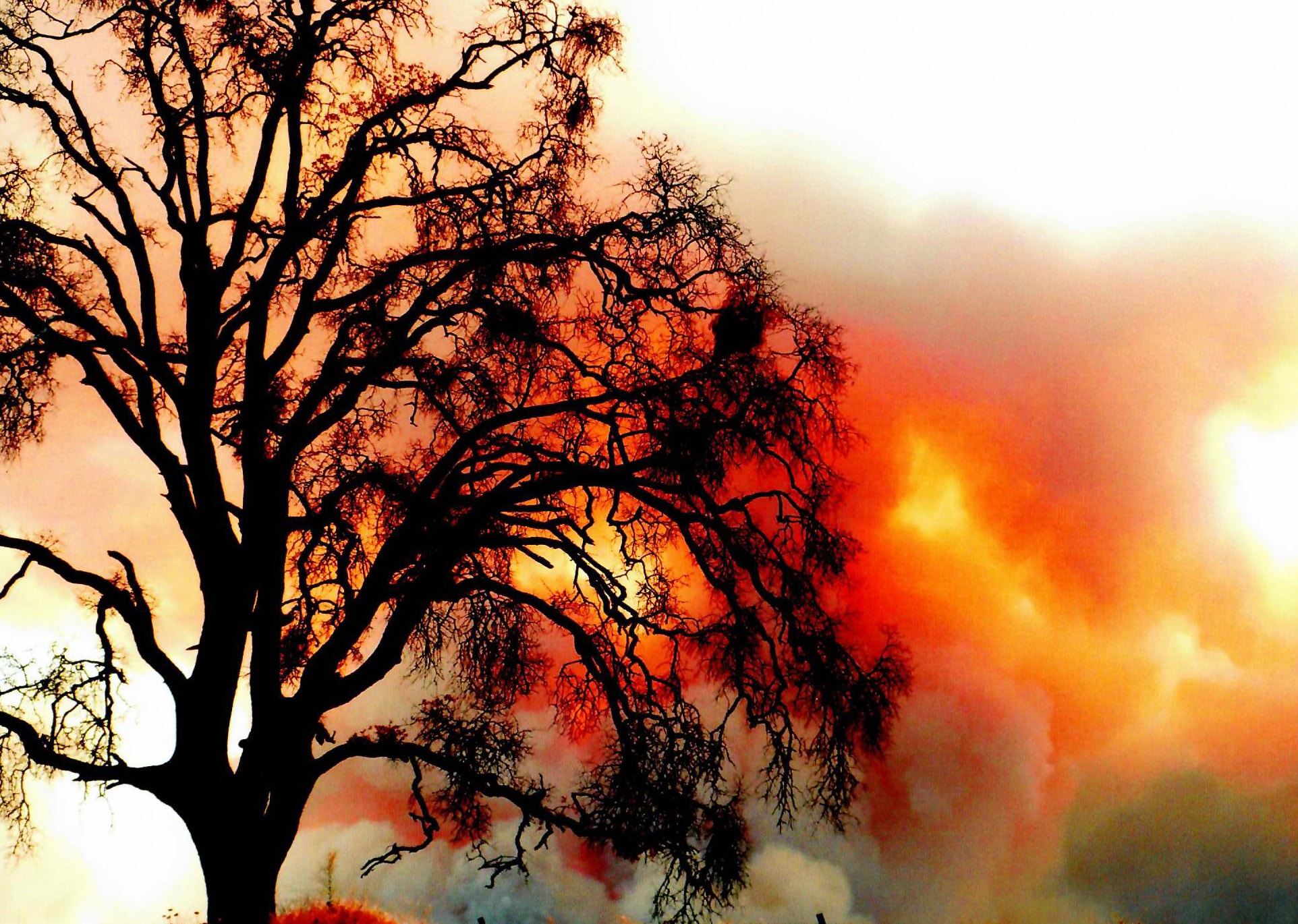 Photo by Wayne Carlson of Rail Road Flat
Photo by Wayne Carlson of Rail Road Flat
And for us, we formed this arts center about a month after the fire, in a weird, maybe twisted, desire to create something new after the destruction. So we wanted a place to preserve the art, where we felt pretty confident it wouldn’t burn. Many artists in our gallery were affected by the fire. Angels Camp had to be evacuated, parts of Angels Camp and Murphys and all the way up to Arnold. They were all under evacuation orders, and the fire, had it not been stopped right before Murphys, would have gone all the way up through to Sonora, into Tuolumne County. It would have kept on going. It was that fierce. It would have devastated all these communities. But firefighters and crews stopped it in time. There was also a day or so of rain, light rain that helped–kind of a divine intervention at that point.
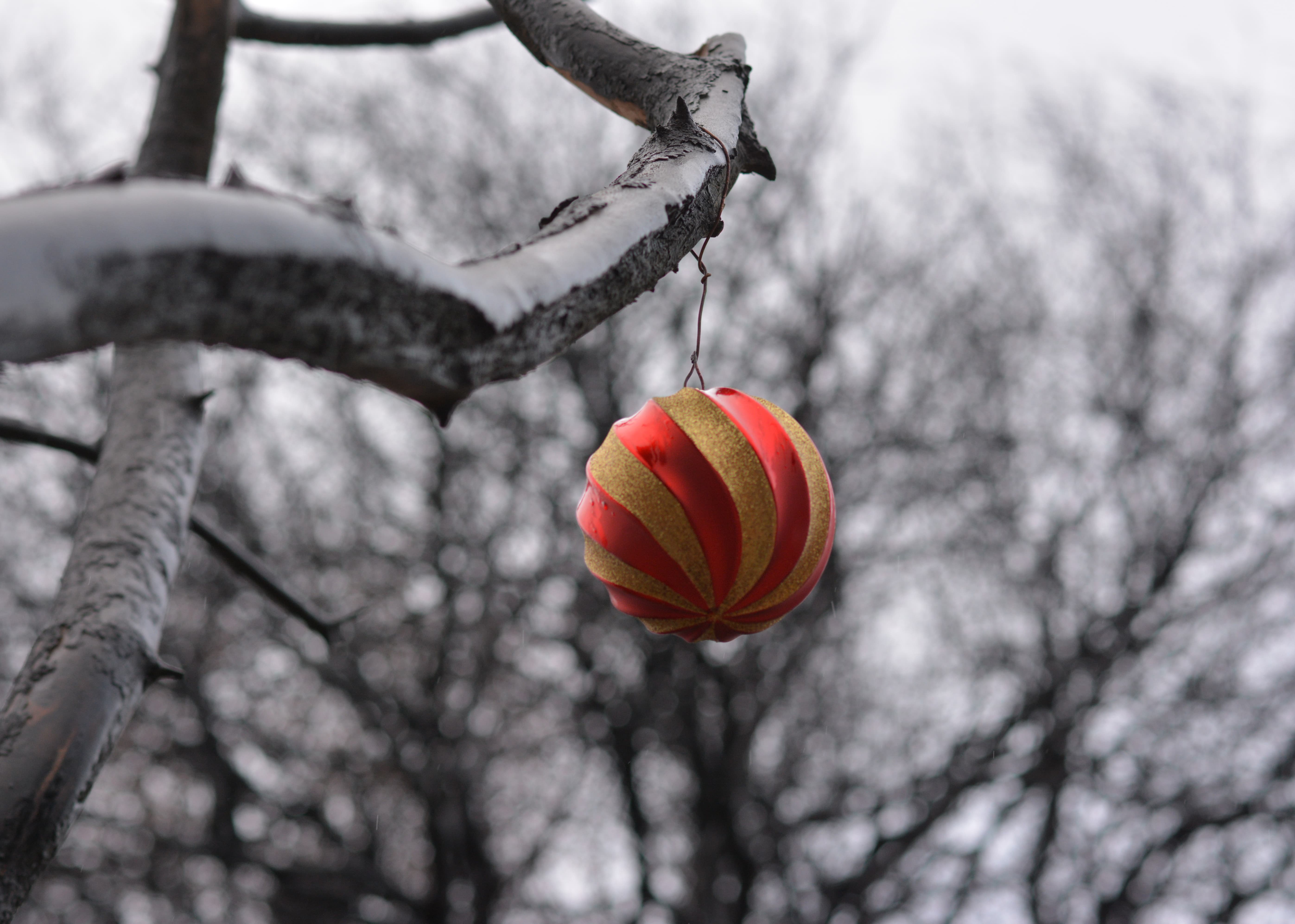 Photo by Kent Lambert
Photo by Kent Lambert
Manzanitas Writers Press was here before the fire, correct?
Monika: Oh yeah, we’ve been in operation as a press since 2009, and before that as a writers group publishing works since 1984. We were situated in San Andreas, and then we found this location and made this our center in the historic downtown area.
How did the idea for the Out of the Fire anthology really come about? Who started it?
Suzanne: I think it began in our Monday meetings for the writers group, Writers Unlimited, first and third Mondays in the daytime, second and fourth Mondays in the evening. What happened was that people were coming to our meetings and saying, “I need to write about this fire. I have to write about what it did to my family, my situation.” This group of people just needed to tell their story. So of course we said, “Come in, sit down, do what you need to do. Write whatever it is that you’re feeling. Is it recollection? [Is it] a memorial?” All different kinds of writing: poetry, prose, photography, art. When did we initially think about the print anthology? When we read the stories and poetry posted on the Out of the Fire blog. It grew from there—we had organized the blog and people sent their writing to us, and we just looked at it to make sure that it was appropriate for all audiences. Then we said, “What are we going to do for the first-year anniversary of the fire of September 2015?” And we came up with the idea of the print anthology—a magnificent collection of people writing to people of the community. It’s a truly community project. Yes, there are professional writers, published writers who have been involved with the project, but we have people who have never thought before to put pen to paper about their experiences, as a way to let the community know that so many are in the same kind of situation. What strikes me most about it is that we have people writing things from extremely different points of view. We have people who have lost their property, their buildings burned to the ground, their land is ruined, it’s no good anymore. And then we have those who have written about the forest being burned, but their actual home was saved—they’re both grappling with the same kind of loss. And not only is it about the loss, it’s also about the rebuilding.
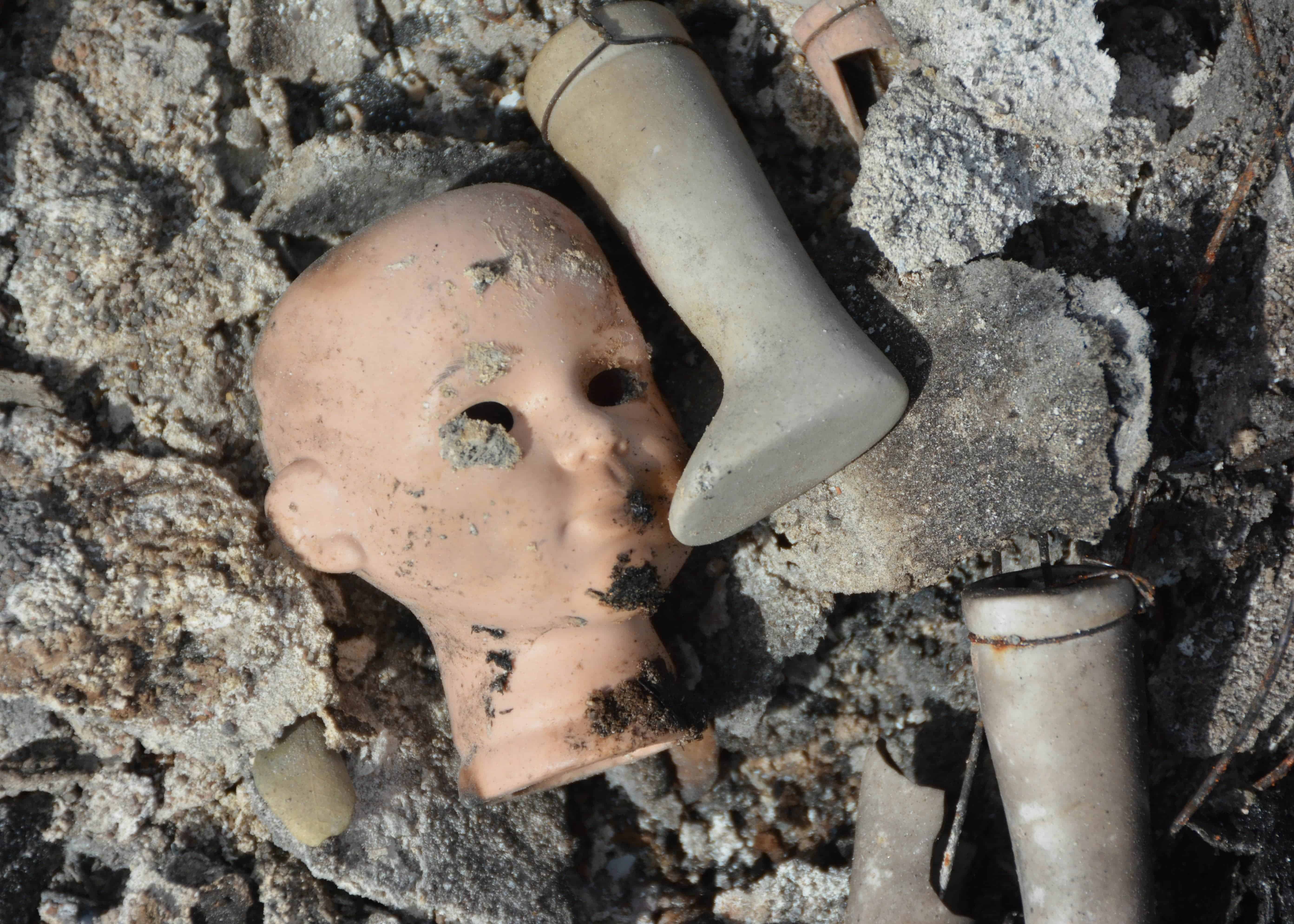 Photo by Kent Lambert
Photo by Kent Lambert
Monika: You see, the people who moved up here love the forested area—and yes we’re supposed to clear their property, and many did, a hundred feet, etcetera—but you move to the forest because you love the habitat: you love the trees, you love nature, you love the animals. That very love doesn’t go away after the fire, but you’re wondering, you’re reexamining, “Where can I go that’s safe? Where can I go in this environment that I feel I can recreate that feeling?” Well many of them are fearful, you know, that it will happen again. Fires are going to be with us over and over and over. When we moved up here, we were building our home and the Old Gulch fire started right over our hill, right on the other side. But fire is inevitable, and what we want to celebrate in this book is the love of the place, the love of the landscape, and why people really find it hard to leave. There’s not enough housing for many of them here that would like to stay. They’re in limbo right now, and this is almost coming at, what–a year and a half after the fire? And they’re still in limbo, they’re not quite sure what they’re going to do, and then the community has changed. It’s attracted a very avariced industry—a cannabis growing industry that has come in and over taken a lot of the properties. It’s great for them, it’s cleared and ready to go, but we’ve been overwhelmed by it, and it’s not the community it was. People don’t want to return because of the element, the criminal element, and just the smell and the nuisance, and the lack of regulation, or the lack of the desire to live near that kind of a thing. So families are rethinking whether they want to return. That is decimating a community and yet it was allowed to occur. Taking advantage of a disaster, the industry came in from all over and took advantage, and so many people are angry about that, among other things. The loss of our trees to the bark beetle infestation is huge, adding insult to injury. Millions of trees in our forest are dying from the bark beetle infestation, making it weak and ready for another fire. We wanted to celebrate the love of the place, and address the sadness, but also maybe come up with some strategies in working through the sadness and the loss, with people writing and reading and expressing things that they may not be able to normally express. So really [it] reaches to the heart in many of these writings. That’s what we wanted to do—make it a permanent record. One thing we’d like to do is on our website, and our blog, continue to have people submit. We’re going to set up links to articles about the Butte fire, so that it will be a receptacle for history, a historic living thing, and people can continue to add their stories when they feel ready. Many people are not ready to talk yet, they’re not ready to let go and to express themselves yet. Many are getting close—time is behind them now, but it’s still very sensitive.
Suzanne: It also can be a way to renew or to rebuild a community because people read and connect with other people’s stories, and so they can form whole new communities built on a disaster. And as Monika said, the historical record of it is very important because fire is part of our background. I live about 26 miles down the road, and when I get up in the morning, I look out my back window, which overlooks a lake, and every time I see a fire I get a little bit jittery. It doesn’t go away, because I remember the day I saw the beginning of the fire: I was coming from Lodi and was almost at Burson when I saw a cloud in the air that looked gorgeous but also looked evil. I said, “There’s something wrong going on,” as I was driving home. It is the anthology, the community support, the blog—they all come together to form new communities that may not have known each other. Now we do.
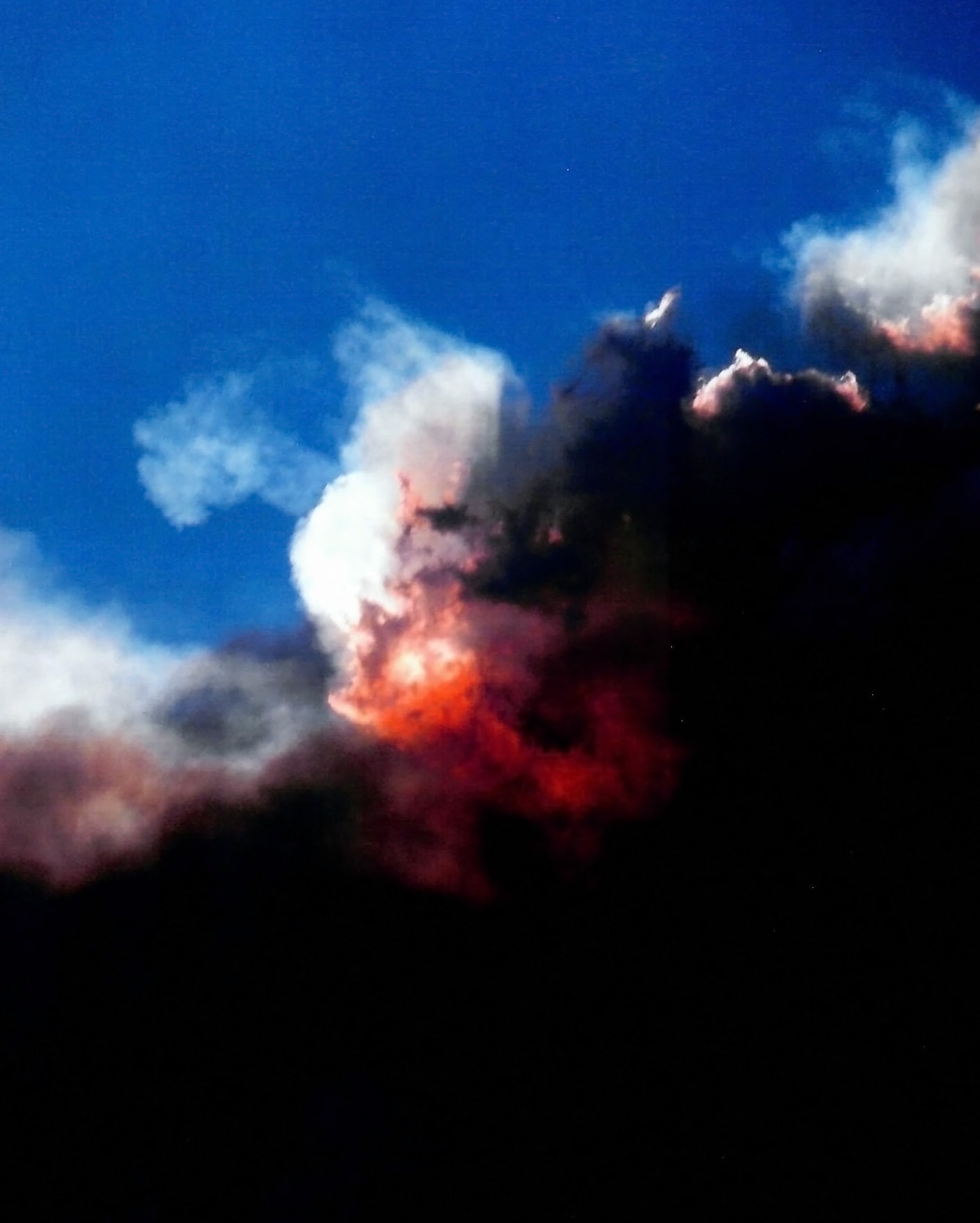 Photo by Wayne Carlson of Rail Road Flat
Photo by Wayne Carlson of Rail Road Flat
Would you say then that the biggest theme you see in submissions and in the community would be fear?
Suzanne: No, no.
Monika: No, it’s like a renewal, it’s a wisdom, a renewal of faith in nature, I think, and maybe even a coming to terms with the power of nature—whether it be good or bad, you know—to take the self out of it, in many ways and to look at the bigger picture. I think people are using this instrument to settle with themselves, and to make it okay and to heal. Like animals go under a bush and lick their wounds, this is hopeful, to cleanse the wound, and to heal it. It’s become an instrument, I think, of great relief to many people. We’ve had people who have lost everything and have written that in here. There are those who didn’t lose everything but feel guilty that they didn’t lose everything and that their neighbors and friends lost everything, and many people have had to have counseling because of this.Yes, it’s been just very hard on them. I think it hit the elderly the hardest because they lost everything that they put their life into. You’re at that point in life where you can’t start over, you can’t physically build a home again; you’re in your 60s, your 70s, your 80s. And you’re tired and just the energy of it—you can’t bear it. So many of them are making lifestyle changes, forced upon them a little earlier than what they thought, so they’re settling with a different way of looking at life—eschewing their possessions as not being as important as they thought they were.
Suzanne: Another thing that struck me about this collection of writing we have in the anthology is that people are actually writing about their memories. We have many stories that are stories from the past, of things destroyed in the fire that people remember—the family, the mothers, the aunties, the grandfathers—who were part of those objects. So a lot of people have been using the anthology, or the blog, to write about these memories they haven’t put down yet on paper. So it’s a way of collecting their memories to share with the public. It’s unfortunate that it’s a devastation, but it is something that has worked out positively for many people in our community. People up here are not fearful, they don’t get scared. But they’re very intentional about their way of thinking, about how they connect their lives. And we get to be a little bit independent in nature, and this—our environment—reminds us daily that we are part of that, part of nature, part of the environment, so we need to take good care of it and be stewards of it.
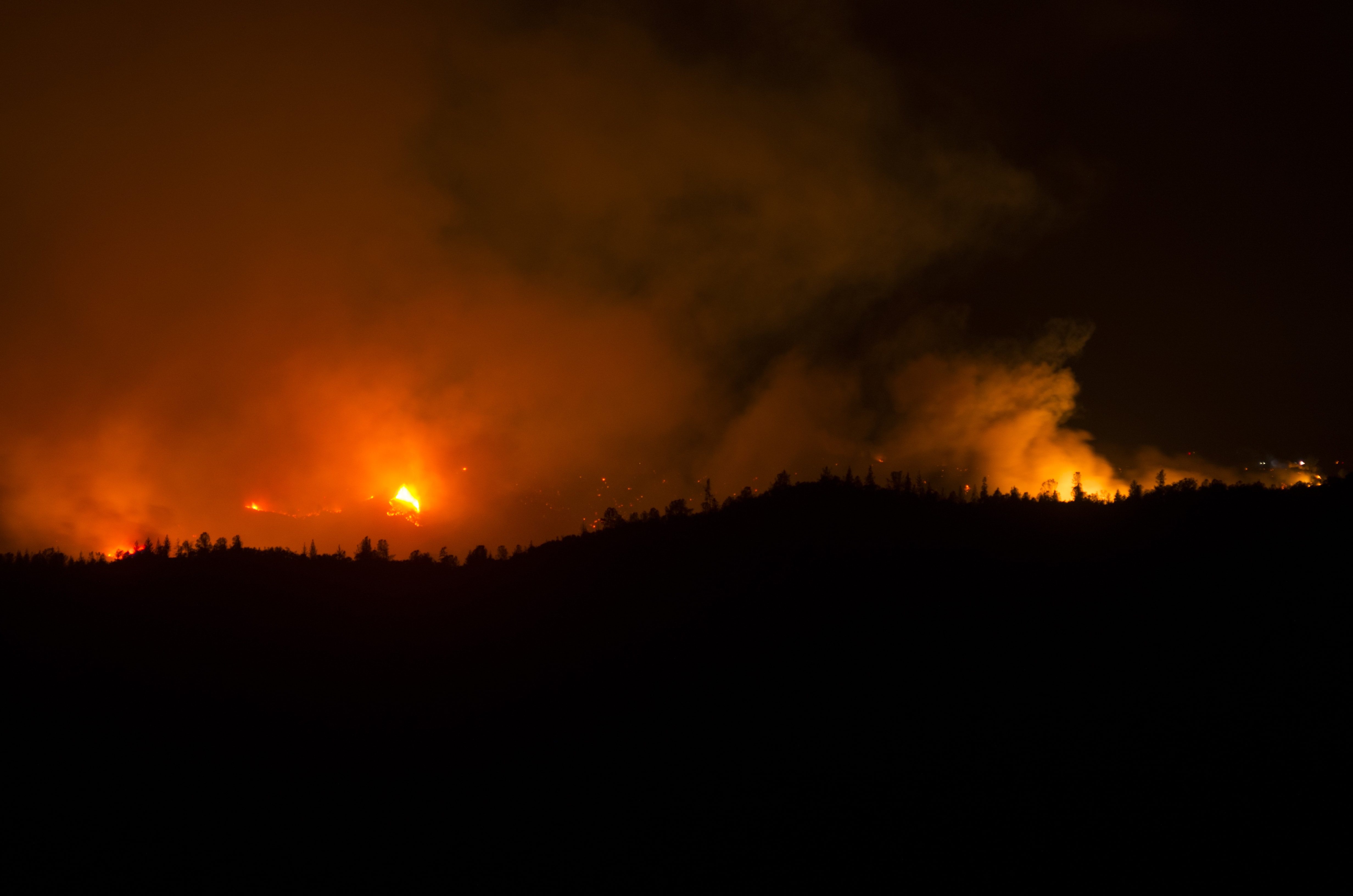 Photo by Ty Childress of Mountain Ranch
Photo by Ty Childress of Mountain Ranch
I think I read on your website that the anthology was more of a permanent project.
Monika: It’s going to be in perpetuity, the website—whatever form, technological form we have, it will continue as we’ve pledged to keep that historic link going and all the links to any stories that we find we’re going to continue working on putting them there and asking people to contribute, to tell us their story. Even after years have past. The historical society will probably keep that going for us in perpetuity.
Suzanne: The history that we are collecting of community writing is the way that history should be recorded—as the event happens, then farther on—it’s a project that is serving the community. Our mission is to nurture and sustain the arts and literature, and the visual arts, in Calaveras County and beyond, so this anthology in particular fits right into that mission. It’s a coordinated effort to have this event, and people’s response to it, recorded for as long as everyone’s still here.
Monika: There will be more fires, and so people can come to this site and read some accounts. They can help themselves prepare before it happens, and in retrospect they can reflect. Like for instance with our cattle—that day that the fire began my husband had just brought back the cattle from another property that he leased for a little while, and he had just brought the last one back. Then we had to evacuate some of them, but the others had to stay. They were all pregnant, and a pregnant cow cannot be without water for more than a day. Well we had the water tanks all set up for fire, but we evacuated and they wouldn’t let us back in. So here we had this dilemma, and it was amazing how the firefighters took care of the cows. They texted me, called me. We have this wonderful text thread, that parts of it will be in the book, of just this, just the way they communicated with me, and reassured me and said, “We will take care of your place and your cows. They were waiting for the calves to be born and they wanted to name them after their crew and their officers, and it was quite heartwarming, you know, to have them there and to know that, yeah they have your back. But it was very difficult for them, because, you know, working in certain conditions where the forest was so thick, some houses they had to let go, they couldn’t save those houses. But we were fortunate that we cleared pasture, had large pasture land and the house is in the center and they were able to use that as a station. And because the water tanks were there—that’s another thing people may want to think about. It’s important to have a supply of water because the fire truck carries 500 gallons but often times they don’t have a pump, so they may have the water but they have to gravity-feed it to the truck, and it’d take a little longer. If you have 1000 gallons or 2000 gallons, a tank right there near your home, they’re going to stay there and protect your place because you have provided water for them. So those are things that people, maybe have to think differently about how you prepare for fire in the outback.
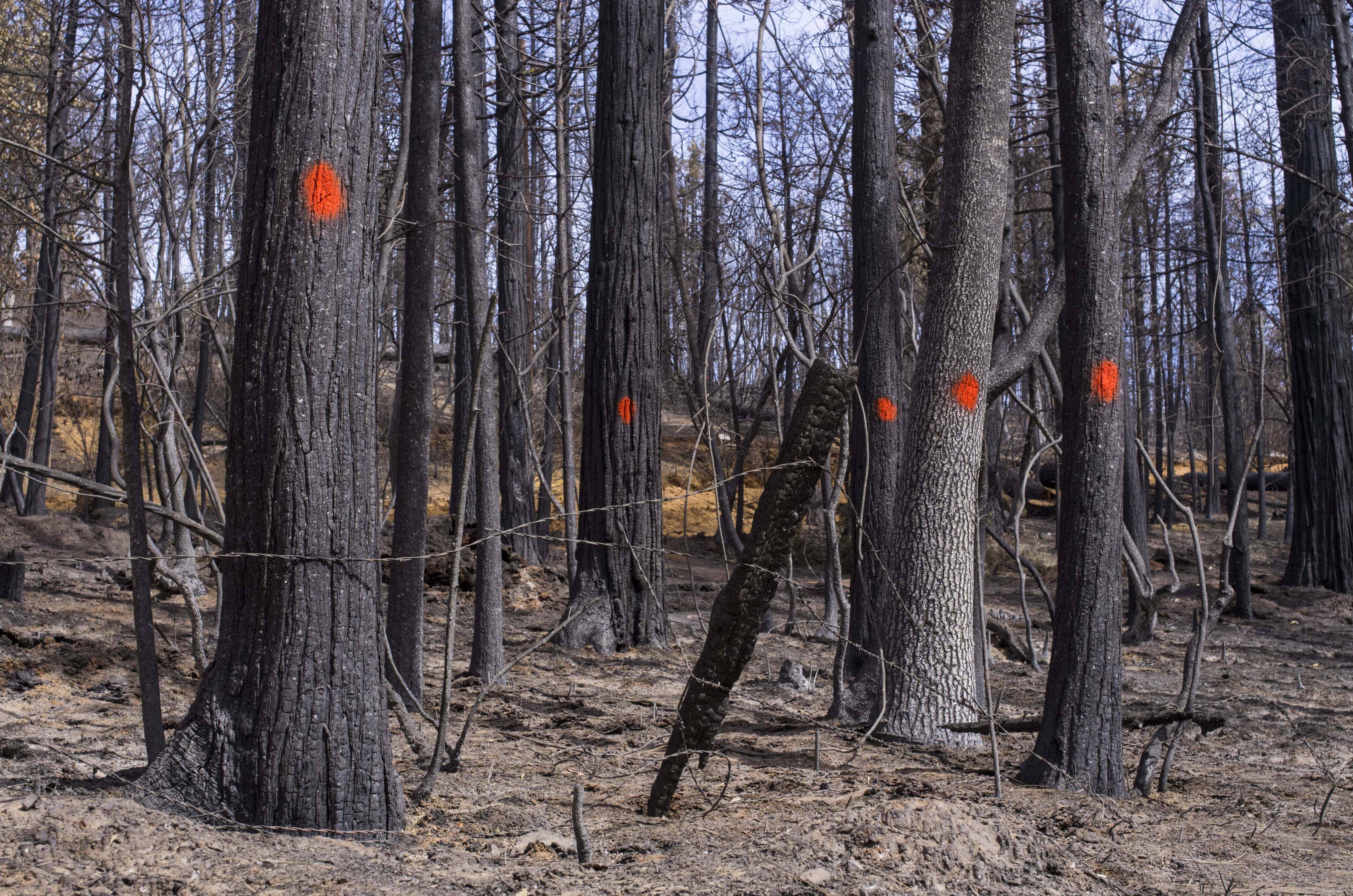 Photo by Ty Childress of Mountain Ranch
Photo by Ty Childress of Mountain Ranch
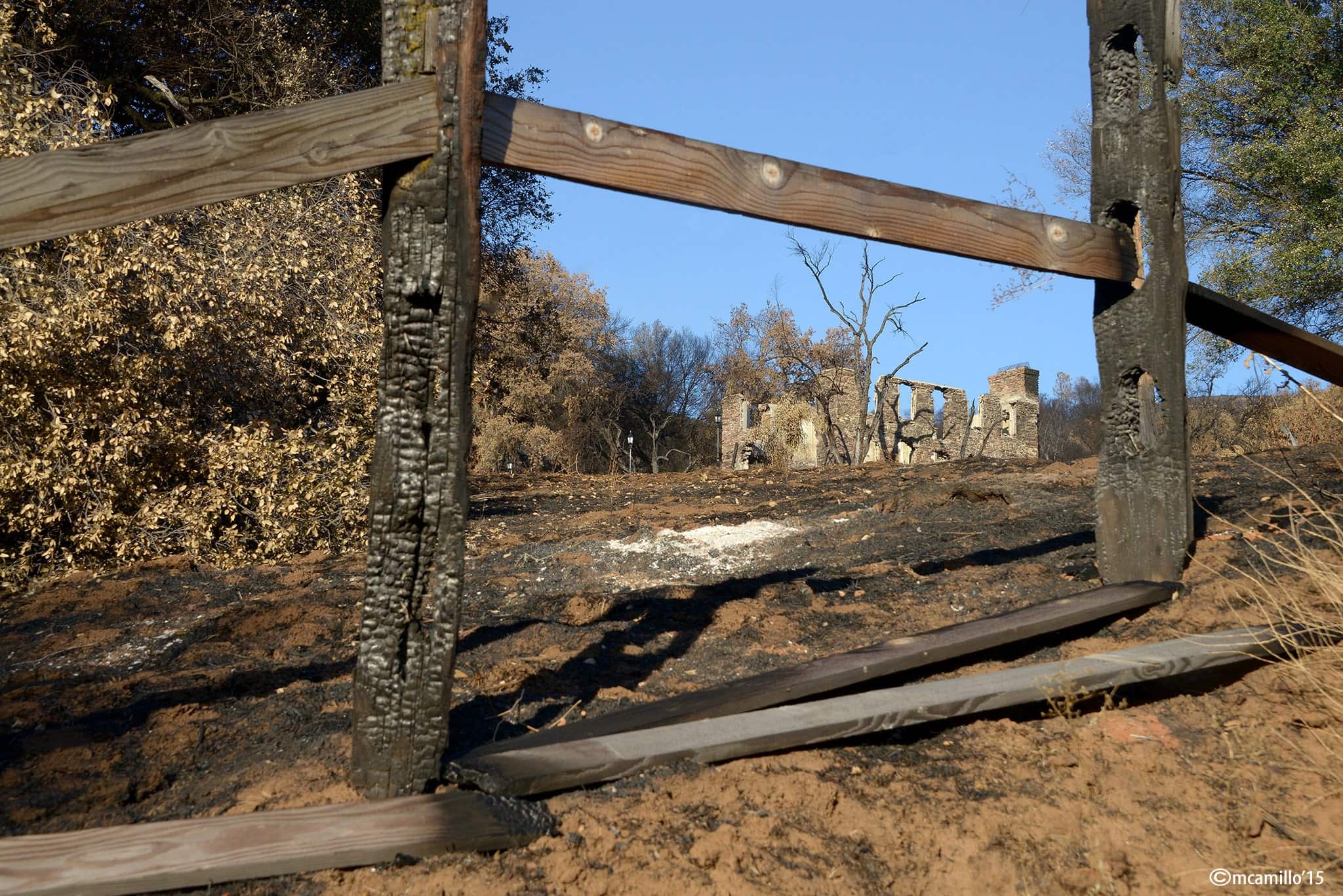 Photo by Marie Camillo
Photo by Marie Camillo
Could you explain a little bit more about the literary event?
Monika: For the release of the publication, we’ve invited Dana Gioia, California Poet Laureate, and he will be coming to speak about poetry and to read his own work and inspire others, and we coupled that with our launch of the anthology. So people will come and also be able to read from the anthology, those contributors who are in there. We have a celebratory time planned where they can do that and it will be at the Angels Camp Museum & Carriage House, which is pretty large, and so that event is timed with our launch and that’s on June 17th from 12-4 PM. We’re inviting everybody to come. It’s free. There will be hors d’oeuvres at the reception and glasses of wine for people to purchase, but it’s going to be nice celebration of renewal through poetry and also through our publication. The challenge is we have 60 days, on the Kickstarter to make the funding amount, and the word is out and everybody’s sharing the word saying go to Kickstarter and make a pledge. We’ve had so many generous people who believe in the project, who are supporting it and coming forward and helping us with it, and so we are excited about that.
Suzanne: I’m excited about this whole idea. On June 17th, when the Poet Laureate for California will be here to share his work and his impressions, people who years ago never thought that their writing would be in a public arena will share their contributions. That’s exciting for me.
Monika: I would say that half of the writers in there, or more than half, are not professional writers and they never thought of themselves as writers, but their stories, their accounts are so well-written and so powerful, that it’s a nice inspiration, I think, to other people who may think, “Oh, I can’t write” or, you know, “I can’t do this,” yet they have stories to tell.
Suzanne: People here have stories to tell. We have people who come into the gallery, and we ask, “Where are you from? What brought you here?” And sometimes we just come right out and ask, “So, are you a writer?” and they say “Oh no, no, no.” We invite them to come sit down with us at one of our writer’s meetings. And they find out that they are writers. I would say 99 percent of people who walk through the door have a story to tell that they haven’t put into order yet, and we’re here to help them do that.
Monika: We just got a nice grant from the Calaveras Community Foundation and it’s called “Voices of Wisdom.” We’re going to be capturing the voices of the elders in our community, and some of those stories, will be Butte Fire stories, I’m sure, but we will be recording those stories for posterity as well and putting together an anthology for those voices, so that’s coming up after the Butte Fire anthology. We’re busy with stories to tell, and capturing those stories from the folks. So we’re excited about that and that’s part of our mission.
Suzanne: It’s in our mission statement for sure.
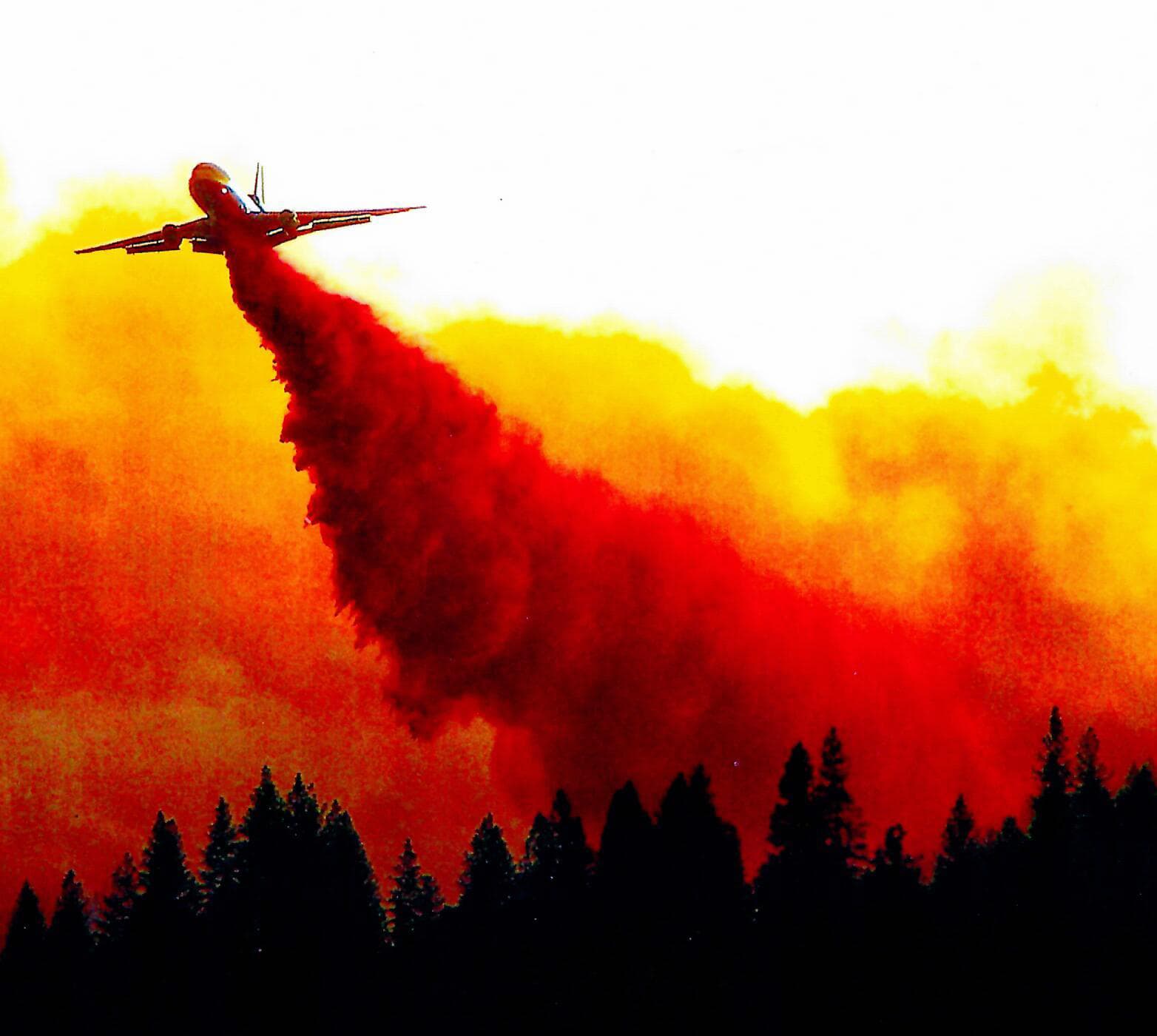 Photo by Wayne Carlson of Rail Road Flat
Photo by Wayne Carlson of Rail Road Flat
What would you like to say to people to help out even if they’re not from Calaveras County?
Monika: Oh the message is just go there (to Kickstarter) and pledge and they can even pledge 10 dollars, even though they may not get a book for that. To get a book it’s 25 dollars and you’ll get the book, and be a supporter. So we encourage them to think about disaster in their own community and how would they would deal with that and is there an instrument that you might want to have as a resource for disaster. This will be a good model for them to take a look at and to be a part of. But we embrace them all. The goal that we have set for ourselves will not pay for the entire production. So we are seeking lots of funding from all different arenas, but the Kickstarter is our focus that we’re trying to get everybody to commit to, and they will be publicly acknowledged, and at the event, and also in the book itself and on the website. Forever. They will be there in the book and website forever.
Support their Kickstarter Campaign for Out of the Fire here.
If you’re interested in publishing a book you can reach Manzanita Writers Press at: (209) 728-6171 or by email: manzanitawp@gmail.com or by visiting The Manzanita Writers Press website.
You can read stories written by residents of the Butte Fire region by visiting The Out of the Fire Blog.
Literary Event with California Poet Laureate Dana Gioia
Angels Camp Museum Carriage House
753 S Main St, Angels Camp, CA 95222
June 17, 12-4 PM
Entrance is Free
